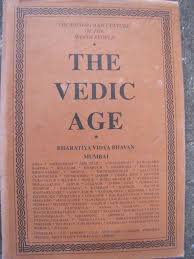Ancient Indian History – Vedic Politics – Notes For W.B.C.S. Examination.
প্রাচীন ভারতীয় ইতিহাস – বৈদিক রাজনীতি – WBCS পরীক্ষা।
- Politics of Vedic India was well structured and organized.Continue Reading Ancient Indian History – Vedic Politics – Notes For W.B.C.S. Examination.
Political Structure
- The political structure of Rig Vedic India can be studied in the following ascending order −
- The Family (Kula), the smallest unit.
- The Village (Grama)
- The Clan (Vis)
- The People (Jana)
- The Country (Rashtra)
- Kula (family) included all the people living under the same roof (griha).
- A collection of several families constitutes the grama (village) and its headman was called gramini.
- The collection of several grama (village) was called as the Vis and its head was called Vispati.
- Several Vis constituted a Jana as it is mentioned as Panchajanah, Yadva-janaha, and Bharata-janaha.
- The aggregation of all Jana constitutes Rashtra (country).
Administration
- The hereditary kings were the popular form of Government.
- The provision of a democratically elected king by the assembly of people Jana was also known.
- The Rashtra was small states ruled by a raja (king).
- The bigger kingdoms were ruled by ‘samrat’ that reflects that they enjoyed a position of greater authority and dignity.
- The Raja administered justice with the assistance of Purohita and other officials.
- The Raja was offered bali, which was voluntary gift or tribute for his services. The bali was offered by his own people and also from defeated people.
- The crimes were strongly dealt with by the administration. Major crimes were theft, burglary, robbery, and cattle lifting.
- The important royal officials were −
- Purohita (chief priest and minister)
- Senani (army chief)
- Gramini (head of a village)
- Dutas (envoys)
- Spies (spy)
- Sabha and Samiti were two important assemblies mentioned in the Rig Veda. These assemblies were forms the essential feature of the government.
- The Samiti was mainly dealt with the policy decisions and political business, included common people.
- The Sabha was a selected body of the Elders or Nobles and less political in character.
Our own publications are available at our webstore (click here).
For Guidance of WBCS (Exe.) Etc. Preliminary , Main Exam and Interview, Study Mat, Mock Test, Guided by WBCS Gr A Officers , Online and Classroom, Call 9674493673, or mail us at – mailus@wbcsmadeeasy.in
Visit our you tube channel WBCSMadeEasy™ You tube Channel
Please subscribe here to get all future updates on this post/page/category/website



 Toll Free 1800 572 9282
Toll Free 1800 572 9282  mailus@wbcsmadeeasy.in
mailus@wbcsmadeeasy.in


















































































































